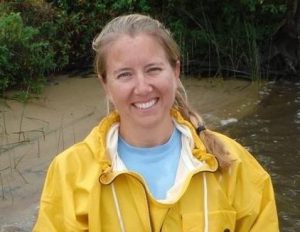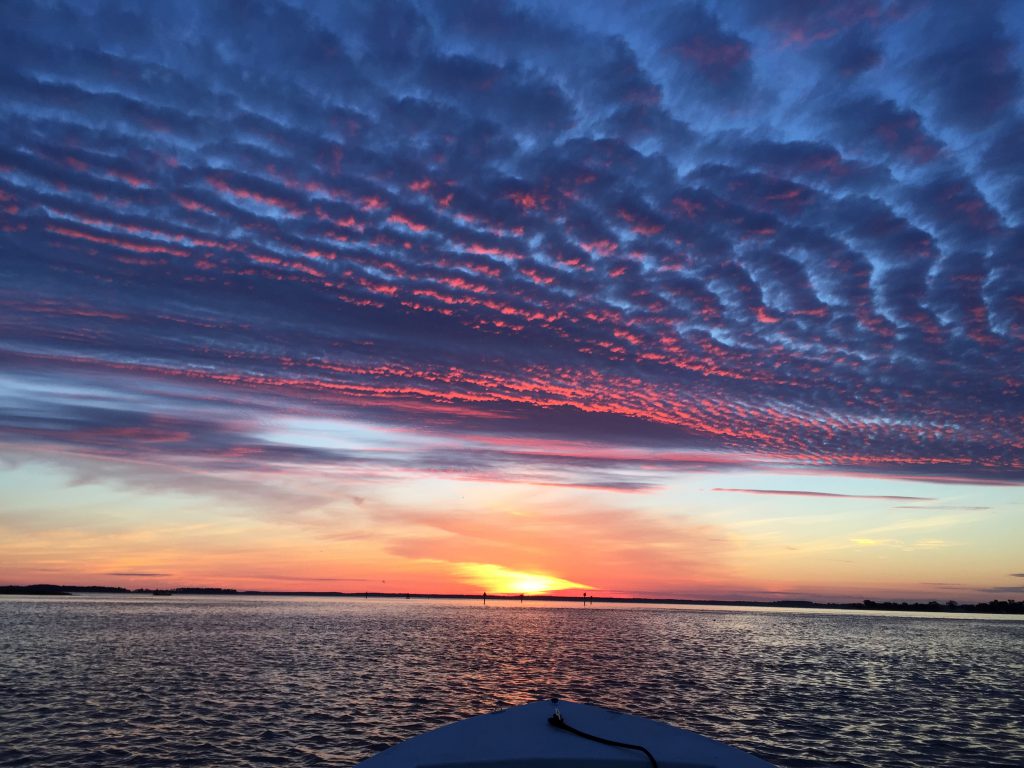From the Field: Fisheries Biologist Beth Versak

Beth Versak
Growing up around water in Anne Arundel County, Beth Versak got hooked on aquatic life early.
“When I was six, I said to my dad I wanted to go fishing, and so he took me,” Versak says. She never looked back, developing an interest in biology, and she has now spent most of her career studying the state’s iconic finfish —striped bass.
While studying at the University of Maryland, Baltimore County, Versak took a part-time job with the U.S. Fish and Wildlife Service, on a survey studying striped bass in cooperation with the Maryland Department of Natural Resources.
The contacts she made in the department led to a job opportunity as soon as she graduated in 1994. She began as a contractual worker with the de

By Beth Versak
“I’ve come full circle,” Versak said. “I started out answering calls from fishermen who found the tags that I now apply.”
Currently Versak is one of four biologists on staff working surveys through the year to monitor the state fish.
Spring is the busiest time for Versak, when the majority of East Coast striped bass come into the Chesapeake Bay to spawn. She spends March getting ready for field work, including the spawning stock survey that lasts for six weeks in the upper bay.
Versak runs the crew, which goes out with a contracted commercial fishing boat to catch striped bass with a gill net, take measurements and scale samples, insert a tag, then release them safely back into the water.
April and May are the best months to study the migratory mature fish, while in summer the surveys focus on pre-migratory and juvenile fish.
During the spring there is also the creel survey, in which Versak and the other biologists meet charter boats at the dock during the spring trophy season to sample their catch. Staff also monitor the commercial harvest in summer, fall and winter.
Harvested fish provide great data, says Versak, since they can be thoroughly studied without time pressure to get them back into the water.
The surveys are federally mandated, although Maryland has been conducting one of the longest continuous studies of finfish in the country—the young of the year survey—since 1954. That survey takes place from July to September.
During winter, Versak doesn’t often go out on the water but still spends a lot of time in her Annapolis office reviewing scale samples on a microfiche machine, measuring age of the fish they sampled. She also rides along on a survey to tag fish where they overwinter. The survey used to be known as the “North Carolina cruise” because they were usually found off the Outer Banks, but in recent years their wintering locations have moved northward, closer to the mouth of the Chesapeake.
Versak enjoys her work, particularly the spawning stock survey. “You never know what you’re going to catch, what you’re going to learn,” she said.
Anyone interested to follow in her footsteps should consider that the field is fiercely competitive, and today a master’s degree is recommended. But above all, going into fisheries management requires someone who “is not afraid to get dirty.”
Her job allows for a lot of interaction with the public, especially the commercial watermen and charter boat captains that assist with the various surveys.
“People in Maryland are passionate about striped bass, and that always makes it interesting,” Versak says. “I feel honored to be part of it, and to assist in managing the species. Striped bass keep us on our toes.”
Article by Gregg Bortz—media relations manager in the Office of Communications. Appears in Vol. 22, No. 2 of the Maryland Natural Resource magazine, spring 2019.


 1-888-373-7888
1-888-373-7888 233733
233733